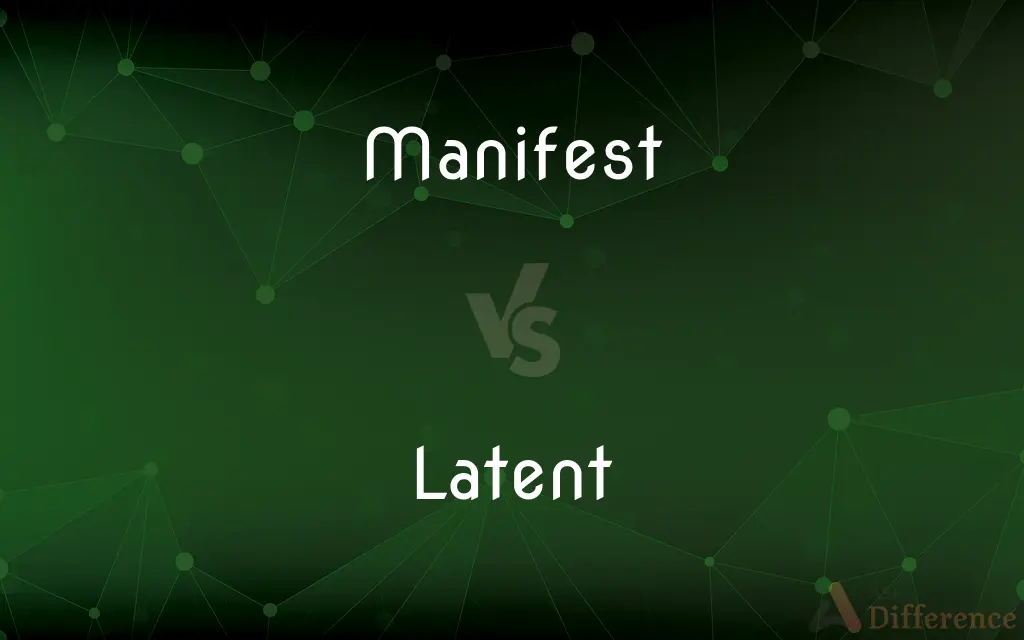Picture this: you’re walking down a bustling street, the cacophony of honking cars and chattering crowds a familiar chorus. You might think, “This is just another day in the city.” But what if beneath the surface, this seemingly ordinary activity served a deeper purpose? This is where the fascinating concepts of latent functions and manifest functions come into play, revealing the hidden layers and unexpected consequences of our social actions.

Image: www.researchgate.net
Imagine a school, a seemingly straightforward institution designed to impart knowledge and skills. Its manifest function—the intended and recognized purpose—is clear: to educate students. But have you ever considered the less obvious latent functions of this institution? What about the social interactions, the development of friendships, and the sense of community that arise within a school setting? These are the latent functions, the unintended but often crucial byproducts of social structures that shape our experiences in profound ways.
Delving Deep: A Journey into Latent vs. Manifest Functions
First, let’s unravel the essence of these two closely intertwined concepts. Manifest functions are the obvious, intended consequences of social institutions or actions. They are the stated goals and objectives that everyone readily acknowledges. Take, for example, a hospital. Its manifest function is undoubtedly to provide medical care to patients, to treat illnesses, and to promote healing.
However, when we delve beneath the surface, we begin to uncover the latent functions, the unintended consequences that often have a significant impact. In the case of the hospital, consider the following:
- Socialization: Hospitals provide a space for individuals to learn about illness, medical procedures, and the healthcare system. Patients, families, and even staff members engage in social interactions and acquire knowledge that they might not otherwise gain.
- Economic Impact: Hospitals generate employment opportunities for doctors, nurses, technicians, and administrative staff, contributing to the local economy.
- Community Building: Hospitals serve as gathering points for communities during emergencies. They become centers of support and collaboration, fostering a sense of unity.
These are just a few examples of latent functions—unforeseen yet often impactful consequences of social institutions. Their importance lies in their ability to reveal hidden layers of social dynamics, enriching our understanding of how societies function.
The Power of Perspective: Unmasking the Unseen
The concepts of latent and manifest functions are particularly useful in analyzing social change. Consider the development of the internet. Its manifest function was to facilitate communication and access to information. However, the internet has had numerous latent functions, including:
- Globalization: Connecting people across borders, fostering international communication and collaboration.
- E-commerce: Creating new avenues for business, revolutionizing trade and consumption patterns.
- Social Movements: Providing platforms for collective action and mobilizing individuals around shared causes.
These unintended consequences, while not always predictable, have significantly reshaped society. The internet has served as a catalyst for both positive and negative changes, highlighting the interconnected nature of social structures and their latent effects.
Navigating the Labyrinth: Putting Knowledge into Action
Understanding the concepts of latent and manifest functions offers a powerful lens for examining our world. It enables us to see beyond the obvious and recognize the hidden forces shaping our experiences. Here are some practical insights you can glean:
- Critical Thinking: Be mindful of the intended and unintended consequences of social actions. Approach issues with a questioning attitude, considering the broader impacts.
- Policy Formulation: When crafting policy, acknowledge the potential latent functions and strive to minimize unintended negative consequences.
- Personal Growth: Gain deeper insight into your own behavior and the social contexts you inhabit. Consider the latent functions of your actions and their potential influence on others.

Image: www.askdifference.com
Latent Vs Manifest Functions
The Unfolding Story: A Call to Explore Further
By understanding the concepts of latent and manifest functions, we equip ourselves with a framework for critical thinking, informed decision-making, and a deeper appreciation of the complex tapestry of social interactions. In this journey of discovery, we are reminded that the world around us is woven with layers, and beneath the surface, there are always more stories to uncover, more meanings to decode.
We encourage you to explore further, delve deeper into the literature on latent and manifest functions, and apply these concepts to your own observations and experiences. The world is full of hidden layers, waiting to be explored and understood.






